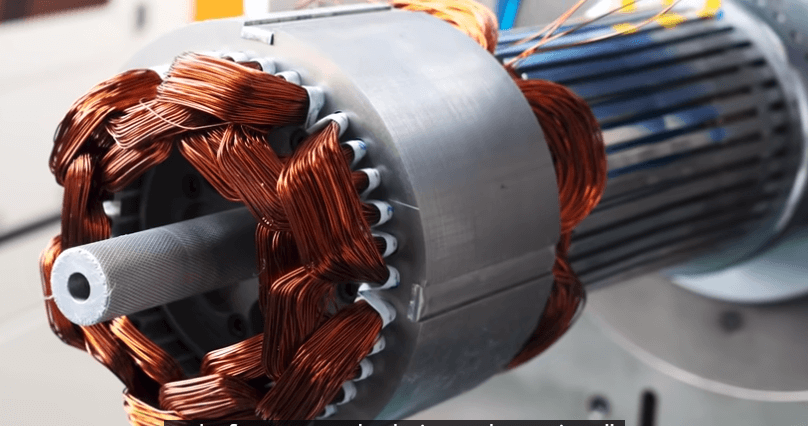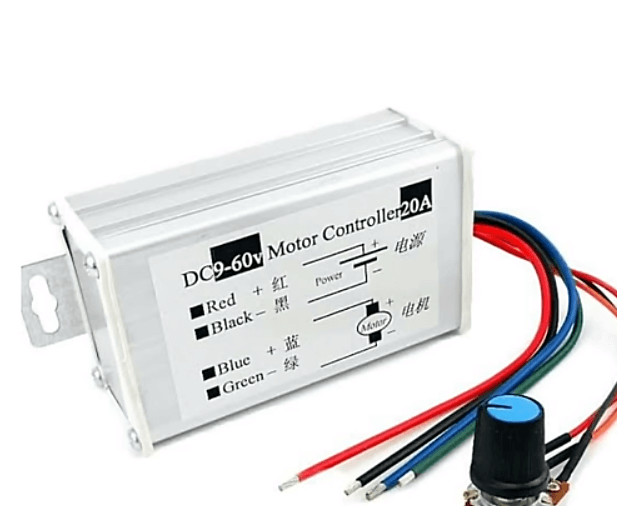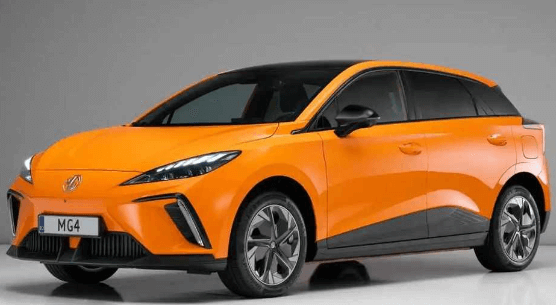Electric cars are becoming very popular these days. Everyone wants to ride an electric car because these vehicles create less pollution than the well-known gasoline-powered cars. They are environmentally friendly, especially in the cities. This singular reason has made a lot of people show interest in these vehicles. But before you get involved, ask yourself this question: How does the electric vehicle work? The awareness will prepare you to welcome your electric car when it finally comes.
The surge in EV popularity is more than a passing trend; it’s a response to pressing environmental concerns and technological advancements. With governments incentivizing green technologies and automakers investing heavily in EV research and development, the market is set for exponential growth. Understanding how EVs function not only helps consumers make informed decisions but also contributes to broader awareness and acceptance of these innovative vehicles.
In this post, I have prepared step-by-step guides on how electric cars perform their magic on the road, which distinguishes them from traditional gasoline-powered cars. By the time you read to the end, you will learn about the parts of an electric car that do all the magic.
Do you think this sounds like something you would want to know more about? Stay with me while I get right into it.
How does the electric vehicle work?
In the rapidly evolving landscape of transportation, Electric Vehicles (EVs) have taken center stage, promising a cleaner and more sustainable future. You might be curious about the inner workings of these modern marvels. How does the electric vehicle work? To appreciate how an EV works, There is a need to delve into its core components, each playing a pivotal role in its operation. Let me take you through a step-by-step exploration to demystify the magic behind the electric revolution.
Battery Packs
The battery is the lifeblood of your electric vehicle, providing the energy needed to power the electric traction motor and drive the wheels. Battery power electric cars. These batteries are typically lithium-ion, similar to the ones in your cell phone but on an industrial scale. The battery assembly is organized into stacks of cells, forming a large bank called a traction battery. This battery stores the energy used to power the vehicle.
Electric cars operate on a straightforward principle; they function by plugging into a charge point and taking electricity from the grid. This marks the beginning of a fascinating journey where electricity becomes the driving force for your vehicle. As you charge the battery, it stores electrical energy, ready to power your electric vehicle (EV) on the open road.

Understanding the Battery Pack
The battery pack is a critical component that dictates the range and performance of an EV.
Battery Capacity and Range
The battery capacity, measured in kilowatt-hours (kWh), directly influences the vehicle’s range. Higher-capacity batteries can store more energy, thus allowing the EV to travel further on a single charge. However, the actual range also depends on driving habits, terrain, and climate conditions.
Battery Management System (BMS)
The Battery Management System (BMS) monitors and manages the battery pack’s health and performance. It ensures optimal charging and discharging, balances the cells, and protects against overcharging and overheating. A well-functioning BMS is vital for the longevity and safety of the battery.
The Electric Motor
Instead of a conventional fuel engine, EVs use an electric motor to generate mechanical energy. When you press the accelerator pedal, the vehicle control unit calculates the current and voltage needed based on your demand. The electric motor then converts this electrical energy into mechanical energy, propelling the vehicle forward. Unlike gas engines, electric motors operate almost silently and produce no tailpipe emissions.
Types of electric motor
There are primarily two types of electric motors used in EVs:
- AC Induction Motors: Known for their durability and performance efficiency.
- Permanent Magnet Synchronous Motors (PMSM): Valued for their high power density and efficiency.
Each motor type offers distinct advantages, making them suitable for different EV applications.

How the Electric Motor Works
Understanding the electric motor’s operation is key to grasping how EVs function.
Conversion of Electrical Energy to Mechanical Energy
The electric motor operates by converting electrical energy into mechanical energy. This process involves the interaction of magnetic fields within the motor, which generates torque and propels the vehicle. Unlike internal combustion engines, electric motors deliver instant torque, providing a smooth and responsive driving experience.

Regenerative Braking System
One of the standout features of EVs is regenerative braking. This system recovers energy during braking and feeds it back into the battery, enhancing efficiency and extending the vehicle’s range. It not only improves overall energy usage but also reduces wear on traditional braking components.
Electric Vehicles operate without a gearbox
Unlike traditional vehicles with internal combustion engines and gearboxes, electric cars operate without a gearbox. This simplicity not only contributes to overall efficiency but also eliminates the need for complicated gear-shifting mechanisms. Instead, electric cars utilize the power generated by one or more electric motors, making the driving experience seamless and intuitive.
Charging an Electric Vehicle
Charging an EV is a straightforward process but understanding the different types of charging can help optimize this routine.
Types of Charging
- Level 1 Charging: Uses a standard household outlet (120V), suitable for overnight charging. It’s the slowest but most accessible method.
- Level 2 Charging: Requires a dedicated charging station (240V), significantly faster than Level 1. Ideal for home installations and public charging stations.
- DC Fast Charging: Offers rapid charging by converting AC power to DC within the charging station. Best for quick top-ups during long trips.
Home Charging vs. Public Charging
Home charging offers convenience and cost savings, especially with time-of-use electricity rates. Public charging, on the other hand, provides flexibility and accessibility during travel, with an increasing number of charging stations available globally.

Power Electronics in EVs
Power electronics are essential for managing the energy flow within an EV.
Role of the Inverter
The inverter converts DC from the battery into AC for the electric motor. This conversion is crucial because most EV motors operate on AC power. The inverter also controls the motor speed by adjusting the frequency of the AC power.

Role of the Converter
The converter steps down the high voltage from the battery to lower voltages needed for auxiliary systems, such as lighting, infotainment, and HVAC. This ensures all vehicle systems receive the appropriate power level for efficient operation.

Thermal Management Systems
Effective thermal management is vital for maintaining the performance and safety of EV components.
Cooling and Heating Mechanisms
EVs use various cooling and heating mechanisms to maintain optimal temperatures for the battery, motor, and power electronics. Liquid cooling systems are common, providing efficient heat dissipation, while heating systems ensure the battery operates effectively in cold conditions.
Importance of Thermal Management
Proper thermal management extends the lifespan of EV components, enhances performance, and ensures safety. Overheating can lead to reduced efficiency and potential damage, while inadequate heating can impair battery performance.
Software and Control Systems
The brains of an EV are its software and control systems, which ensure seamless operation and integration of various components.
Vehicle Control Unit (VCU)
The Vehicle Control Unit (VCU) is the central processor that coordinates the operation of the motor, battery, and other systems. It ensures everything works harmoniously, optimizing performance and efficiency.
Integration with Advanced Driver Assistance Systems (ADAS)
Modern EVs often feature advanced driver assistance systems (ADAS), which enhance safety and driving convenience. These systems include features like adaptive cruise control, lane-keeping assist, and automated parking, all integrated with the VCU for seamless operation
Read this also: What technology is used in electric vehicles?
Environmental and Economic Impact
EVs offer significant environmental and economic benefits compared to traditional internal combustion engine vehicles.
Environmental Benefits
EVs produce zero tailpipe emissions, reducing air pollution and greenhouse gas emissions. They also contribute to less noise pollution, creating quieter urban environments. The shift to renewable energy sources for electricity further enhances their environmental credentials.
Cost of Ownership
While the upfront cost of EVs can be higher, the total cost of ownership is often lower. EVs have fewer moving parts, resulting in reduced maintenance costs. Additionally, the cost of electricity is typically lower than gasoline, leading to savings on fuel.
Future of Electric Vehicles
The future of EVs is promising, with ongoing advancements and market growth.
Emerging Technologies
New technologies, such as solid-state batteries, wireless charging, and vehicle-to-grid (V2G) capabilities, are set to revolutionize the EV landscape. These innovations promise enhanced performance, convenience, and integration with smart grids.
Market Trends and Predictions The EV market is expected to continue its rapid growth, driven by increasing consumer demand, supportive government policies, and declining battery costs. Predictions indicate a significant rise in EV adoption, potentially surpassing traditional vehicles in the coming decades.
Electric cars represent a transformative shift in automotive technology, offering numerous benefits in terms of efficiency, environmental impact, and driving experience. Understanding the components and workings of EVs helps demystify this technology and highlights its potential.
Take away
As we move towards a more sustainable future, electric vehicles will play a crucial role. Continued advancements in battery technology, charging infrastructure, and vehicle integration will drive this evolution. Embracing EVs not only contributes to a cleaner environment but also represents a step towards smarter, more efficient mobility.
Electric vehicles are more than just a trend; they are the future of transportation. By understanding how they work, we can better appreciate their advantages and prepare for the exciting developments ahead. So, whether you’re considering purchasing an EV or simply interested in the technology, there’s never been a better time to learn about this revolutionary mode of transport.
This post has delved into the working system of electric vehicles and the components that perform wonders in electric cars. With this, you now know how electric cars work, and I believe you will be able to make an informed decision when you are buying your electric car. Do engage with my blog for more on electric vehicles and any other related issues with cars. Share your thoughts with me in the comment section below.

With Over 7 years of experience dealing with car owners as a car lease agent, I have gained matchless car knowledge to help every car owner know what exactly is wrong with their cars.



